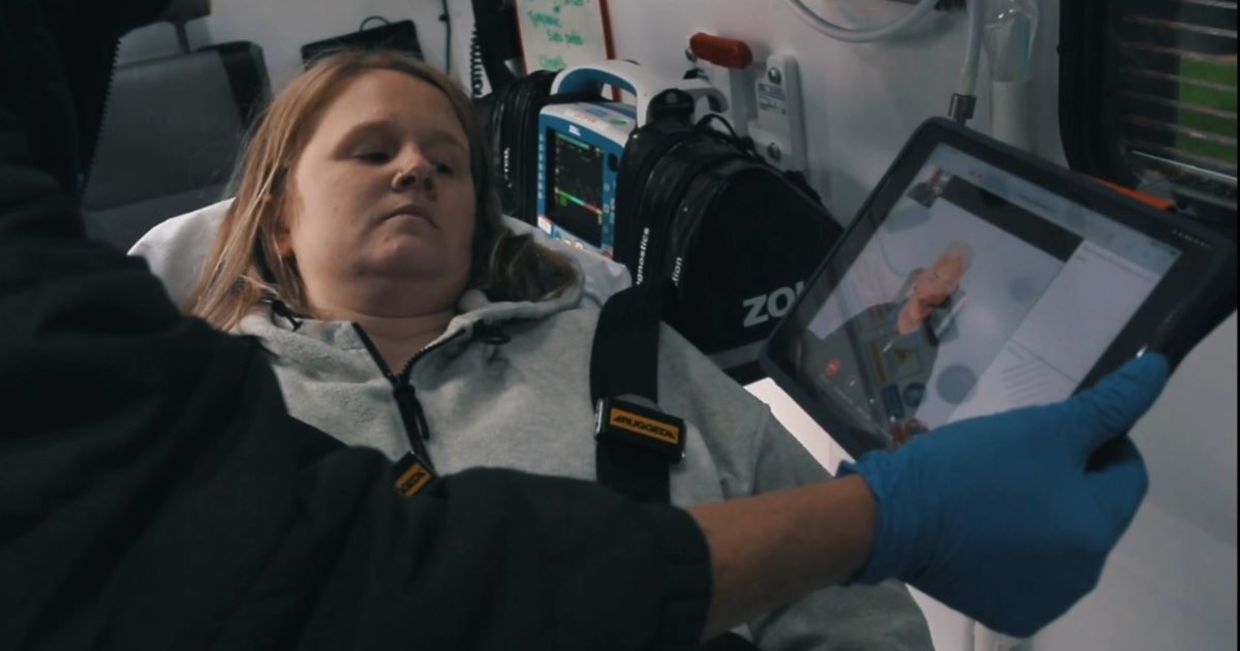
(Courtesy North East Ambulance Service NHS)
Ambulances are well equipped with all the medical supplies and devices needed to transport ill or injured patients to hospitals. Now, an ambulance service is going above and beyond the norm by using a video app to improve its care of people who are Deaf or hearing impaired.
Beginning in May, 2024, all North East Ambulance Service (NEAS) vehicles have access to an iPad that is equipped with an app called SignVideo, reported the BBC. The app allows ambulance crews to interact with a British Sign Language (BSL) interpreter on screen 24 hours a day, every day.
This will allow crews to communicate with patients and will help assess medical conditions as well as explain treatments and potentially save lives.
Effective communication
A service that will allow communication with Deaf patients is absolutely necessary. That’s because, according to a press release from the NHS North East Ambulance Service, an estimated 151,000 people in the UK use BSL; of those 87,000 are deaf.
While the NHS health advisors have access to BSL, there have been communication barriers in ambulances where crews have to ask potentially life-saving questions. “As an emergency service, we are committed to delivering high quality patient care and making sure all patients receive prompt and effective communication during emergency situations,” Mark Johns, engagement, diversity and inclusion manager at NEAS said in the press release.
He added that the “partnership with SignVideo means that when a patient who is Deaf or uses BSL, we are able to triage and communicate more easily.”. All ambulance crews will be trained by the spring of 2025.
Tips for Communicating with Deaf patients
While SignVideo is helping ambulance crews and patients communicate better, there are still barriers that impact the medical care that Deaf people receive. According to the health organization SignHealth, these issues exist from booking an appointment to be seen and throughout the treatment period.
Deaf people have to go into health care providers to schedule appointments because of the lack of accessible ways to access the provider. That’s because a regular phone call will not work. Accessible ways include SMS, online, or by emails. Remote consultations about test results and treatment options are also not possible without a BSL interpreter via a video relay system like SignVideo.
It is also important for doctors to be able to communicate with their patients so sign language interpreters must be available for patients who need it. Many Deaf or hearing-impaired people can lip read, so doctors should maintain eye contact and speak using normal lip movement and at their normal speaking volume. Doctors can also use written notes and diagrams.
The NEAS is taking an important step in the right direction by providing equal levels of healthcare who are not hearing impaired. But there is still a way to go before equal access to healthcare is achieved.
YOU MIGHT ALSO LIKE:
This App Lets Kids With Hearing Loss Enjoy Movies
CODA Wins Three Oscars, ‘Unmuting’ the Deaf World
Innovation Enables Deaf People to ‘See’ Conversations







